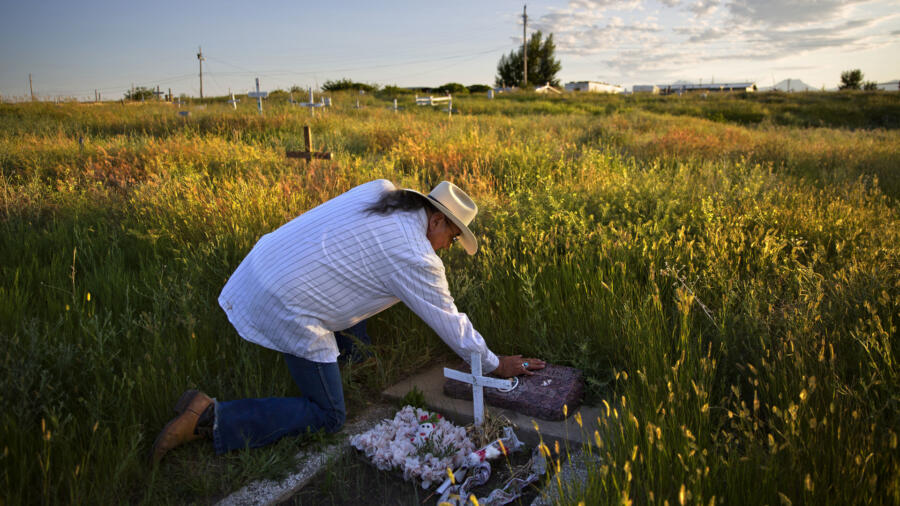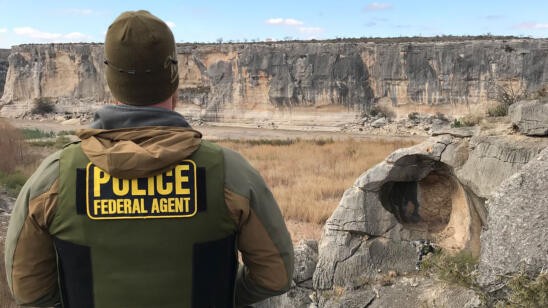When 19-year-old Jade Williams, a member of the Native American Tlingit tribe, was found unresponsive one night in 2017 following a party in Kake, Alaska, police didn’t arrive on the scene until the next day.
Kake, a town of 550 people on Kupreanof Island, has no police department and is only accessible by plane or boat. Alaska State Troopers had to wait for daylight, and for the bad weather to clear, before they could make the 45-minute flight from Juneau to Kake. They also had to wait for the crime-scene technicians to arrive in Juneau on a two-hour flight from Anchorage, says Kake Tribal Council President Joel Jackson, the unofficial town guardian.
The police arrived roughly 12 hours after they were called, which was much faster than they did five years earlier, when 13-year-old MacKenzie Howard was found beaten to death, Jackson told A&E True Crime.
The night of Jade’s death, Jackson was called to the scene. With the help of a few others, he tried to revive Jade—his cousin’s daughter—using CPR and a defibrillator. But they couldn’t bring her back. Jade was pronounced dead when she arrived at Kake’s health center.
Jackson then did what he used to do 40 years prior when he was the city’s police chief, before the one-man department was shut down for lack of funds: He cordoned off the area, boarded up the windows and doors and asked a few people to guard the house, trying to protect any evidence that may be inside. He also talked to witnesses, learning of three individuals who may have been involved. Jackson says he gave all the information he’d gathered to the state troopers as soon as they arrived.
However, almost two years later, no arrests have been made. Jade Williams’s death is classified as “suspicious,” according to an Alaska Public Media report. Jackson says state troopers he spoke with suspected the case was a homicide caused by blunt-force trauma. Alaska police declined to comment on the case.
Jade’s death illustrates an epidemic coming to light in Alaska—and in other areas around the U.S.—involving hundreds, and possibly thousands, of murdered or missing Native American women. Legislative, funding and awareness-raising efforts are under way, and it’s getting some political traction with help from the #MeToo movement. Some campaigns use the social media hashtags #NotInvisible and #MMIW (Missing and Murdered Indigenous Women) to call attention to the crisis.
However, it’s a multi-faceted problem with no simple solution.
“It’s heartbreaking,” Jackson tells A&E True Crime. “This has been going on for quite a while, and it hasn’t stopped.”
The size and scope of the problem is a mystery. Poor data collection and reporting make it hard to know the actual numbers of missing and murdered Indigenous Alaskan women.
A 2018 report from the Urban Indian Health Institute identified 506 cases nationwide of Native women disappearing or being killed—nearly one-third of which aren’t in any law-enforcement records. It’s likely an undercount, the report states. Of the states surveyed, Alaska ranked fourth-highest on the list.
As of 2016, the National Crime Information Center reports that more than 5,700 Native American women have been reported missing, although some advocacy groups say that number is inaccurate.
Still, it’s a big problem in America’s biggest state—Alaska has more square miles than Texas, California and Montana combined. It’s also one of the most sparsely populated states. Many small, remote towns and reservations have no police departments. Some, in the bush, don’t even have roads in or out. Reaching them can take days and require boats or planes, with travel often hampered by weather.
That makes it difficult to combat the outrageously high violence rates against women in Alaska’s native communities, which have created a culture where Indigenous women feel invisible and disposable. According to a 2016 National Institute of Justice study, more than 80 percent of Native women experience violence in their lifetimes.
And much of this violence is happening in their homes. Native communities have the highest rates of family violence, suicide and alcohol abuse in the U.S., according to a Washington Post report. Physical assault of women is 12 times the national average, and rape rates are the highest in the nation—three times the national average. Domestic-violence rates are 10 times higher than the national average on reservations. And, perhaps most shockingly, on some reservations, women are murdered at 10 times the national average, the Associated Press reports.
“There is no 911 to call. There are no Amber Alerts. Community members are the first, and sometimes only, responders to cases of domestic violence and sexual assault,” Patricia Alexander, co-chair of the Central Council Tlingit and Haida Indian Tribes of Alaska’s (CCTHITA) Violence Against Women Task Force, told A&E True Crime.
Tribes are trying to address these issues, with parenting programs and domestic-violence workers, but there is little or no money available to support them.
“Some tribes are too small to have the infrastructure needed to request grants and do these things,” says Alexander, a victim of violence herself, who recently testified about the issue before the U.S. Senate Committee on Indian Affairs.
The opioid epidemic only compounds the problem, Alexander adds.
So does the declining number of police officers and VPSOs (Village Public Safety Officers). Alaska State Troopers are currently at “critically low levels,” according to a report. It’s estimated that there is one Alaska State trooper for every 1 million acres.
The state also lacks a unified 911 system, making access to police even harder in rural areas.
Some, but not all, towns have VPSOs, but their powers are limited. They aren’t allowed to carry guns or make arrests, Jackson says, and the positions are hard to fill. In 2017 there were only 53 of them.
“If we had funding, it might entice someone to do it,” Jackson says. “But the money isn’t there.”
Complex jurisdictional issues also complicate policing, leaving people in some native communities unsure of who to call for help. Alaskan towns are governed by either local police, state police or tribal governments which have varying policing policies. There are more than 200 federally recognized Native American tribes in Alaska, plus hundreds more that are not recognized. Cases can be clouded further based on where the land is located, and whether the people involved are members of a tribe or not.
What can be done to stop the violence? U.S. Sen. Lisa Murkowski, of Alaska, believes a good first step is to gather data, so lawmakers can figure out the best places to direct resources. She recently co-introduced legislation called Savanna’s Act to increase data collection, empower tribal governments and share data across federal, state, local and tribal groups.
The bill is named after a 22-year-old Spirit Lake tribe woman who was eight months pregnant when she was murdered in North Dakota in 2017.
“We owe it to the families. We owe it to these many [missing] native women to ensure they are not forgotten…” Murkowski says in a video she shared with A&E True Crime.
These women were remembered during women’s marches held across Alaska in January 2019. Many marchers wore red clothing as a sign of support for missing and murdered Indigenous women.
Some Alaskans, including Alexander and Jackson, are frustrated that fish and wildlife police seem to get priority.
“If we shoot a moose, or shoot a deer, or any other wildlife, there’ll be a whole group of wildlife troopers who show up within hours,” Jackson says. “They’ll come on their own planes. They have helicopters and boats… But if someone gets killed, we have to wait.”
Related Features:
The Case of Missing White Woman Syndrome
How Inmates Help Solve Cold-Case Murders While Playing Cards
How ‘Live PD,’ AMBER Alerts and Social Media Have Helped Find Missing Children
Cleveland Kidnapping Survivor Michelle Knight: Healing After 11 Years in Hell
‘Good Luck Sleeping Tonight’: Serial Killers Plague Almost All Cities


